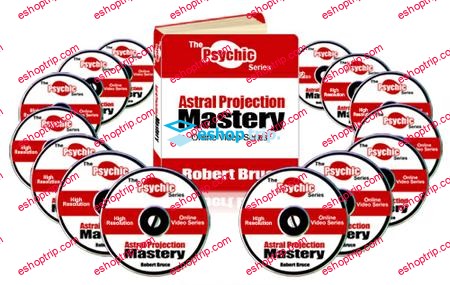Published 9/2024
MP4 | Video: h264, 1920×1080 | Audio: AAC, 44.1 KHz
Language: English | Size: 912.76 MB | Duration: 3h 10m
The Yogic Science of Time and Space
What you’ll learn
Know the advanced elements of Vedic Astrology
Deep Understanding of impacts of planets on each other
Understand how to detect strength and weakness
Reading Charts systematically
Requirements
The content of the “Vedic Astrology Basic” Course
Description
This course is for students with knowledge of the material of the “Vedic Astrology Basic” course. Without the prerequisites most of the material in this advanced course can only be put to very limited use. With this course you will finally know all the important tools needed to be an astrologer! Important and unique concepts like Shad Bala, to assign a certain weight to planets, or the amazing possibilities of the Lajjitaadi Avasthas, which help you really understand, why certain planets seem to behave differently than a superficial look would suggest. There are some techniques, elements and concepts in Vedic Astrology not included here, because Jyotish is a very ancient science and many different schools and systems have their own ways of using it. Some of the more important concepts not included here are mentioned and shortly explained in the “Out of Scope”-chapter. After this course you will have a real understanding of all the elements needed to read charts. There is even a whole chapter on reading charts. You will get a systematic approach to every chart. Do that with every chart provided here and you will make some fast progress. Of course, it takes time, practice and experience to be good at Jyotish, so it is extremely important to be cautious with readings for others or oneself. First you need to be a real astrologer and here you have everything to be one.
Overview
Section 1: Introduction
Lecture 1 Introduction
Section 2: Direct Aspects
Lecture 2 Direct Aspects – Intro
Lecture 3 Direct Aspects Calculation
Section 3: Shad Bala
Lecture 4 Shad Bala – Intro
Lecture 5 Shad Bala – Six Elements
Lecture 6 Sthana Bala
Lecture 7 Dig Bala
Lecture 8 Kala Bala
Lecture 9 Chesta- , Naisargika- & Drik-Bala
Lecture 10 Shad Bala – Total
Section 4: Vimshopaka
Lecture 11 Vimshopaka – Intro
Lecture 12 Vimshopaka Calculation
Lecture 13 Vimshopaka – Vargas in Use
Section 5: Practice Part 1
Lecture 14 Practice #1
Section 6: Lajjitaadi Avasthas
Lecture 15 Lajjitaadi Avasthas – Intro
Lecture 16 Lajjitaadi Avasthas – Parts
Lecture 17 Lajjitaadi Avasthas – Types
Lecture 18 Lajjitaadi Avasthas – Ashamed
Lecture 19 Lajjitaadi Avasthas – Proud
Lecture 20 Lajjitaadi Avasthas – Starved
Lecture 21 Lajjitaadi Avasthas – Thirsty
Lecture 22 Lajjitaadi Avasthas – Delighted
Lecture 23 Lajjitaadi Avasthas – Agitated
Lecture 24 Lajjitaadi Avasthas – Jagradaadi
Section 7: Practice Part 2
Lecture 25 Practice #2
Section 8: Houslords Extended
Lecture 26 Houslords – Intro
Lecture 27 Houslords in Houses
Lecture 28 Houslords – Example 1
Lecture 29 Houslords – Example 2
Section 9: Practice Part 3
Lecture 30 Practice #3
Section 10: Vargas – Divisional Charts
Lecture 31 Vargas – Intro
Lecture 32 Navamsha – 9th Divisional Chart
Lecture 33 Navamsha – Important Planets
Lecture 34 Navamsha – Important Houses
Section 11: Practice Part 4
Lecture 35 Practice #4
Section 12: Reading Charts
Lecture 36 Reading – Intro
Lecture 37 Reading – Steps
Lecture 38 Reading – Example Venus #1
Lecture 39 Reading – Example Venus #2
Section 13: Out of Scope
Lecture 40 Out of Scope – Intro
Lecture 41 Out of Scope – Chara Karakas
Lecture 42 Out of Scope – Outer Planets
Lecture 43 Out of Scope – Compatibility
Lecture 44 Out of Scope – Prashna
Section 14: Outro
Lecture 45 Outro
This course can be for vedic astrologers or those who want to know about some very specific elements of Vedic Astrology. Also people interested in Yoga and Yogic sciences will learn how Vedic Astrology helps in understanding the karmic structure.
Homepage










